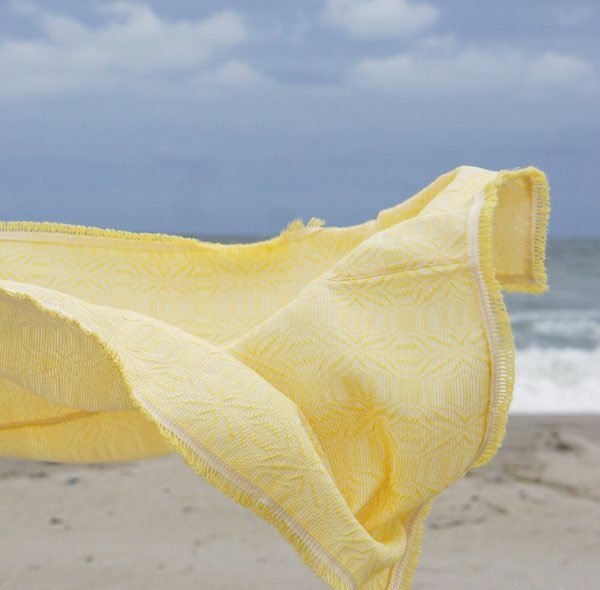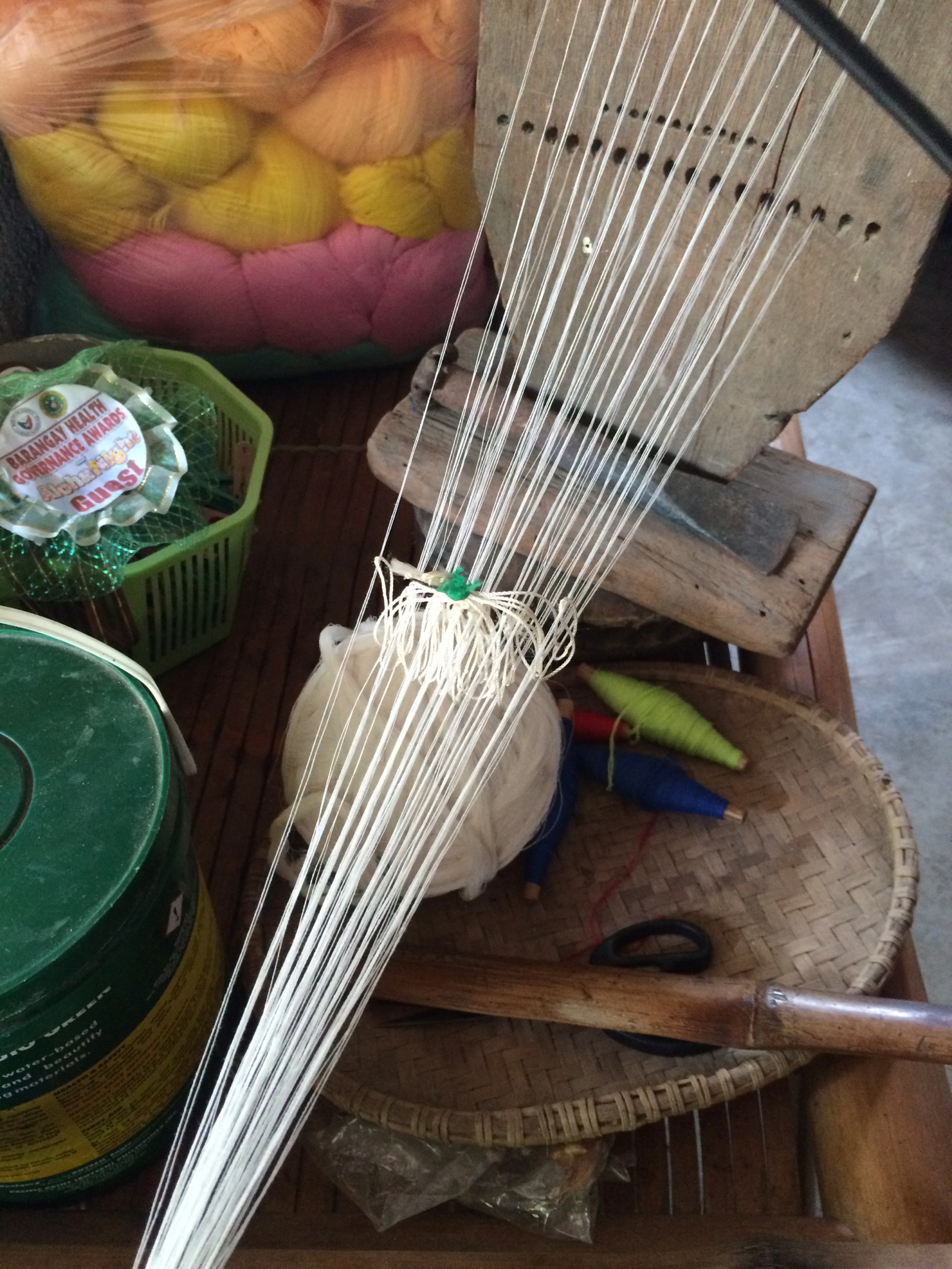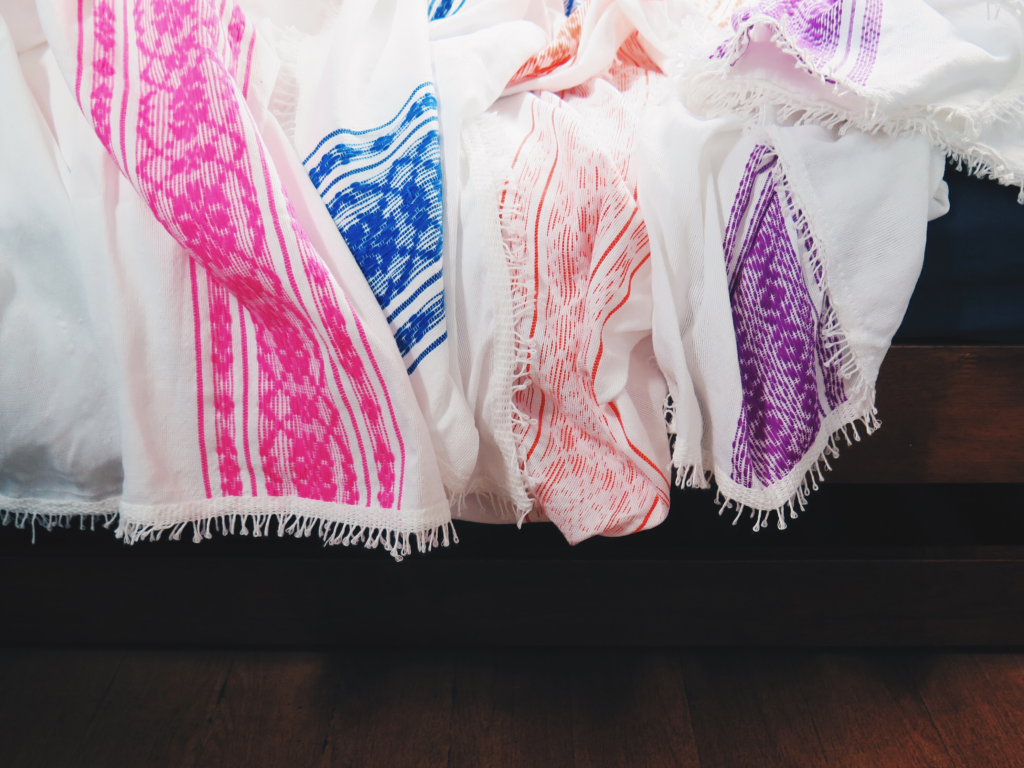Interview Danielle Austria
Images Cesca Torrente


Locano’s story began after Cesca Torrente (Chem, to her friends) found herself lost in a stack of abel at a family friend’s house in Vigan. 

Handloom weaving has been a long-standing craft of the Ilocos province but with fewer young people taking up the craft, its heritage is threatened.
Hey, Cesca! Please introduce yourself to Kanto’s readers.
Hi! I’m Cesca (ses-ka). Most of my friends call me Chem (ch as in chimes), so that’s also me. 🙂 I’m a daughter, a lover, a maker, a seller, and most of all, I am the mother of Locano. I am also the co-host of Ladies, Wine & Design Manila – a conversation series inspired by Jessica Walsh for ladies of all gender experiences. It aims to foster female creativity through conversations about creativity, business, and life.
I like to ideate and do a lot of things, but I mostly run and take photos of everything that fascinates me in and out of the city.
Tell us the story of Locano. How did it all begin?
Locano is about love for things beautifully made, love for discovery and grounding, and love in relationships (especially that of mothers and daughters).
My mom is from Vigan, Ilocos Sur, but I grew up in Manila. When we were kids, we would only visit Vigan during holidays of obligation, like Holy Week, family reunions and funerals. As I grew older, I visited Vigan less and less. I became a stranger to the city. In 2003, my grandparents’ house was destroyed by a typhoon, and it was only in 2013 that my mom’s family was able to rebuild it.
During a visit in January of 2015, we met with my mom’s friend. She owned a weaving house in town, where they made all kinds of abel (Ilocano for weave): rugs, kitchen towels, table runners and blankets. Curious, I tried out the loom and ran my hands through every piece of fabric in that place. It felt magical. I was lost in stacks of abel. It got me thinking about how I never noticed this before. It was right under my nose!
I left with some blankets and a couple of rugs. At first, I didn’t know what to do with them, but there was this excitement to start something, to tell others about it. The frustration and burnout from working a full-time job at a bank kept me motivated. I knew I had to start with a name, and in August, while talking to a friend, “Locano” presented itself. I am Ilocano and also a bit of a loca-loca.


From leather-crafting to woodwork, there has been a growing preference for handmade among young Filipinos—whether as hobbyists, as consumers, or as entrepreneurs. What do you think is driving this?
There has been a raised awareness and consciousness on giving equal opportunity to locally made products and services. Young Filipinos are also beginning to recognize the sustainability of small, independent businesses. We believe in small but good work.
What are your thoughts on indigenous/traditional crafts being adapted by mainstream brands? When is it appreciation, and when is it appropriation?
Culture is our fingerprint. It’s what we are made of, and is key to appreciating the present and creating the future. Building a culture of sustainability and appreciation of handcraft doesn’t happen overnight, or through trends—it has to be worked on everyday. The responsibility lies on each one of us to work with communities, write about them, use the abel and share them with others.
There must be accountability, respect, and transparency. You must honor the culture. Just because it’s beautiful and deemed cultural, doesn’t mean it should be used.
Do your part in conducting research and utilizing context, and that’s what will help you distinguish appreciation from appropriation. The fine line between appreciation and appropriation is in the way that the craft is used, how it is marketed, and what goes back to the artisans/community.
As a participant of the craft industry, we are sensitive to the tradition of the community where the fabric/tradition originates from: its relevance, value, and significance to them. Give due credit to the artisan and to the cultural relevance. •


See more of Locano’s sweet weaves on Instagram @locano.ph
This story first appeared on Kanto No. 4 2019.

